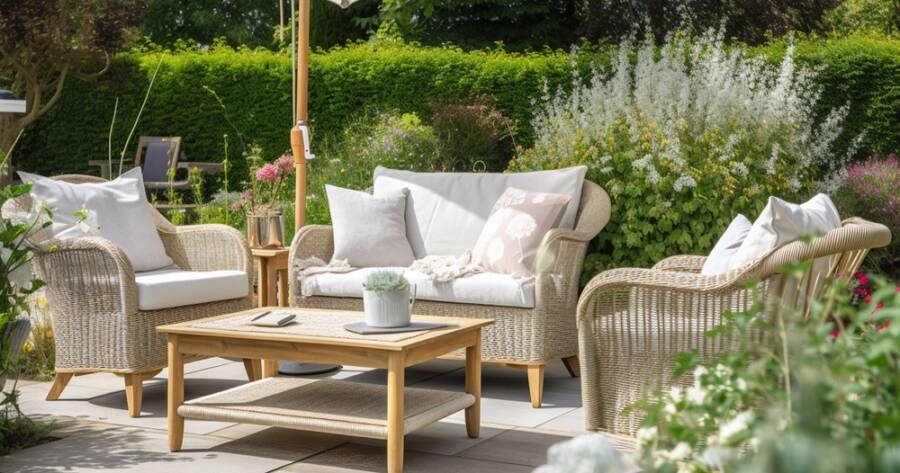Creating a garden sanctuary offers a peaceful retreat from the hustle and bustle of daily life. A well-designed garden provides an inviting space for relaxation, reflection, and connection with nature. By combining thoughtful design elements with personal touches, anyone can cultivate a tranquil outdoor haven. Exploring key aspects of garden creation might inspire the transformation of your outdoor space into a serene oasis.
Designing Your Garden Layout
The foundation of a garden sanctuary lies in its layout, which should prioritize harmony and balance. Begin by assessing the size and shape of your space, considering natural features like sunlight and shade. Creating zones for different purposes, such as seating, planting, and pathways, encourages a cohesive design.
Paths guide movement through the garden and can be crafted from various materials, including stone, gravel, or wood. Incorporating curves and natural shapes fosters a sense of flow. By thoughtfully organizing the layout, a garden can become both functional and aesthetically pleasing.
Choosing the Right Plantings
Selecting the right plants is essential for cultivating a lush and vibrant garden sanctuary. Consider choosing a mix of perennial and annual plants to ensure year-round interest. Native plants often thrive with less maintenance, offering resilience and adaptability to local conditions.
Fragrant plants like lavender and jasmine add sensory richness, while flowering varieties provide visual appeal. Incorporating a variety of heights and textures adds depth and dimension to the landscape. Thoughtful plant selection encourages biodiversity and creates an immersive natural experience.
Incorporating Water Features
Water features add tranquility and a soothing ambiance to any garden space. Options range from simple birdbaths to elaborate fountains or ponds. The gentle sound of trickling water can enhance relaxation and focus, creating a meditative atmosphere.
Water features also attract wildlife, encouraging birds and pollinators to visit your sanctuary. A strategically placed fountain or pond can become a focal point around which the garden flourishes. Incorporating water elements promotes peace and balance, enriching the garden experience.
Creating Comfortable Seating Areas
A welcoming garden sanctuary invites you to linger, so seating is a crucial component. Comfortable seating areas like benches, chairs, or hammocks offer spots for relaxation and contemplation. Selecting weather-resistant materials ensures durability while complementing the overall design.
Position seating to take advantage of views or to create cozy nooks for privacy. Consider options for flexible seating arrangements to accommodate gatherings or individual relaxation. Comfortable seating enhances the garden’s purpose as a refuge for rest and rejuvenation.
Lighting Your Garden Retreat
Well-planned lighting extends the enjoyment of your garden sanctuary into the evening. Soft, ambient lighting creates warmth and enhances the atmosphere without overpowering the natural beauty. Solar lights, lanterns, or LED strips offer energy-efficient options suitable for various designs.
Illuminating pathways ensures safety, while accent lighting highlights architectural elements or prized plants. Thoughtful lighting choices create a magical nighttime ambiance, inviting you to enjoy the garden at any hour. Proper lighting transforms your outdoor space, enhancing its allure and functionality.
Adding Personal Touches
Personalizing your garden sanctuary allows it to reflect individual tastes and interests. Adding personal touches like sculptures, wind chimes, or a favorite color palette brings unique character to the space. Artful arrangements of decorative elements can infuse the garden with whimsy and charm.
Incorporating features like herb gardens, vegetable patches, or a meditation corner aligns the space with personal hobbies. Seasonal decorations and DIY projects offer opportunities for creative expression. By tailoring the garden to suit your lifestyle, it becomes a truly personal haven.
Embracing Sustainable Practices
Sustainability is an important consideration in creating an eco-friendly garden sanctuary. Practices such as composting, rainwater harvesting, and using organic fertilizers contribute to environmental health. Choosing native plants reduces the need for excessive watering and chemical interventions.
Engaging in sustainable gardening encourages mindful stewardship of resources and supports local ecosystems. Creating habitats for beneficial insects and wildlife enhances biodiversity and ecological balance. By embracing sustainability, you cultivate a garden that thrives in harmony with nature.
Cultivate Tranquility
Building the perfect garden sanctuary involves thoughtful design, plant selection, and personal touches. By integrating elements like water features, seating, and lighting, you can create a soothing escape.
Embracing sustainable practices fosters a harmonious connection with the environment. Through careful planning and creativity, your garden becomes a bespoke retreat, offering peace and joy. Creating this green oasis invites relaxation and reflection, nurturing both the spirit and the senses.

